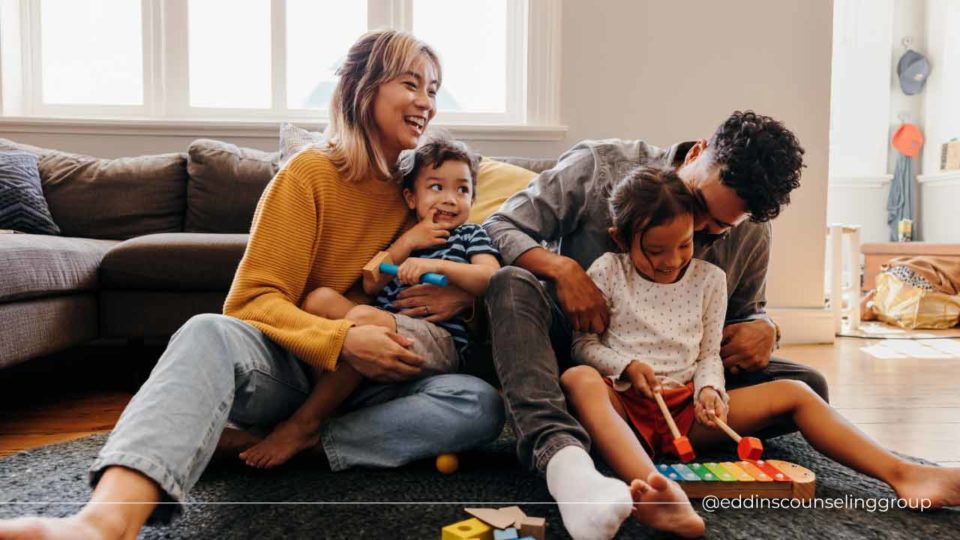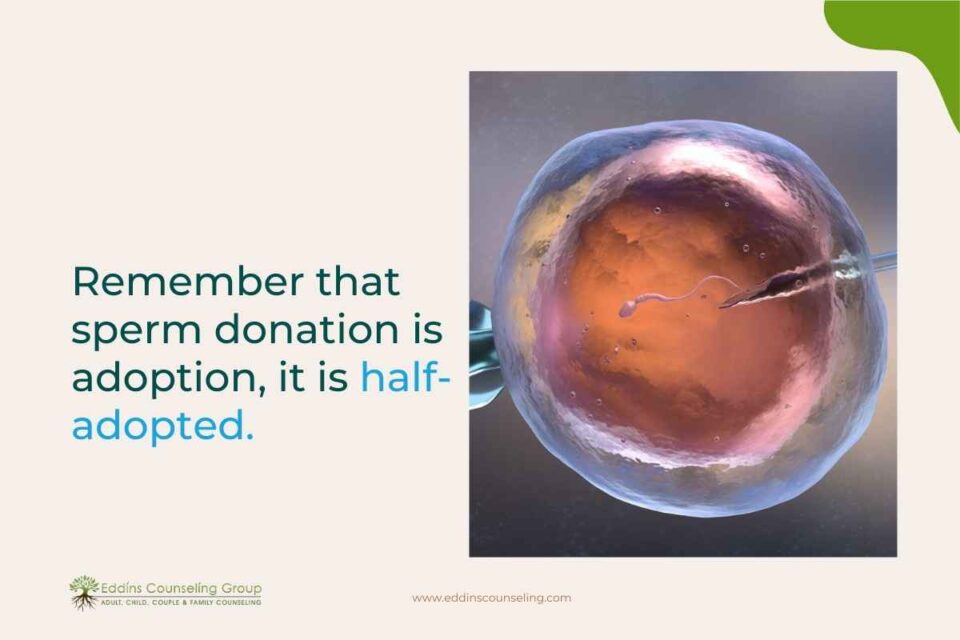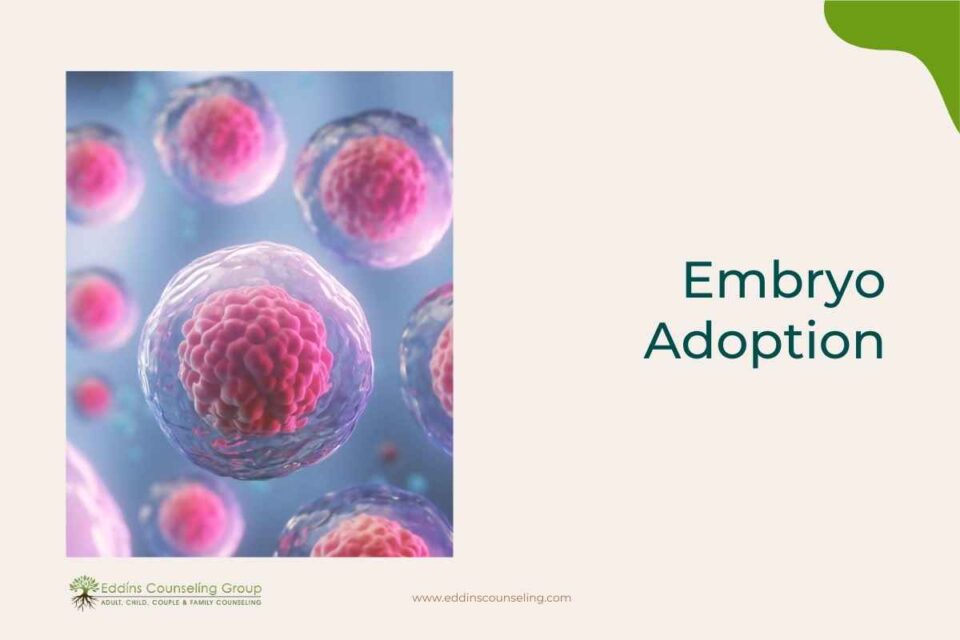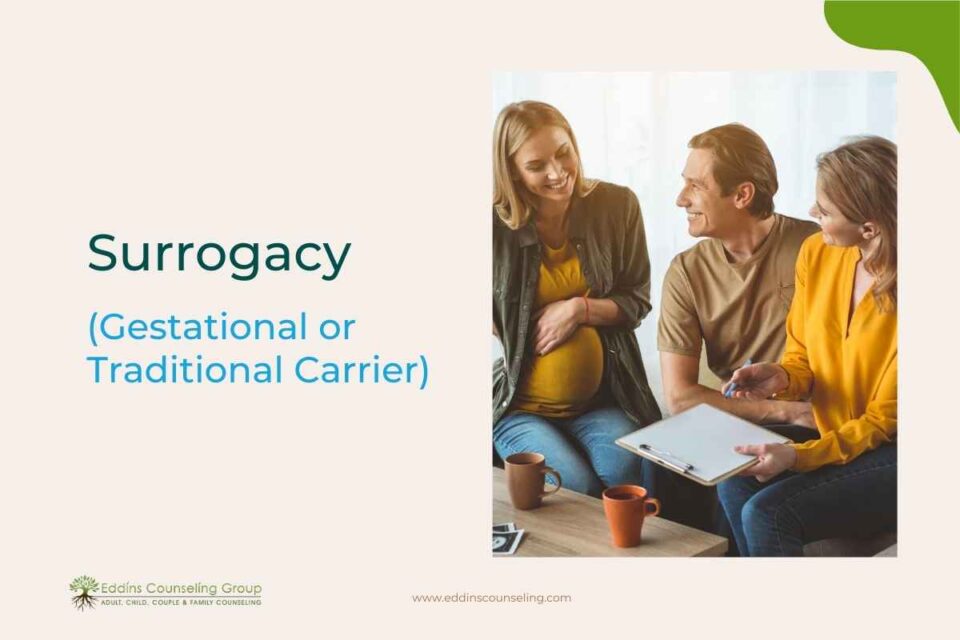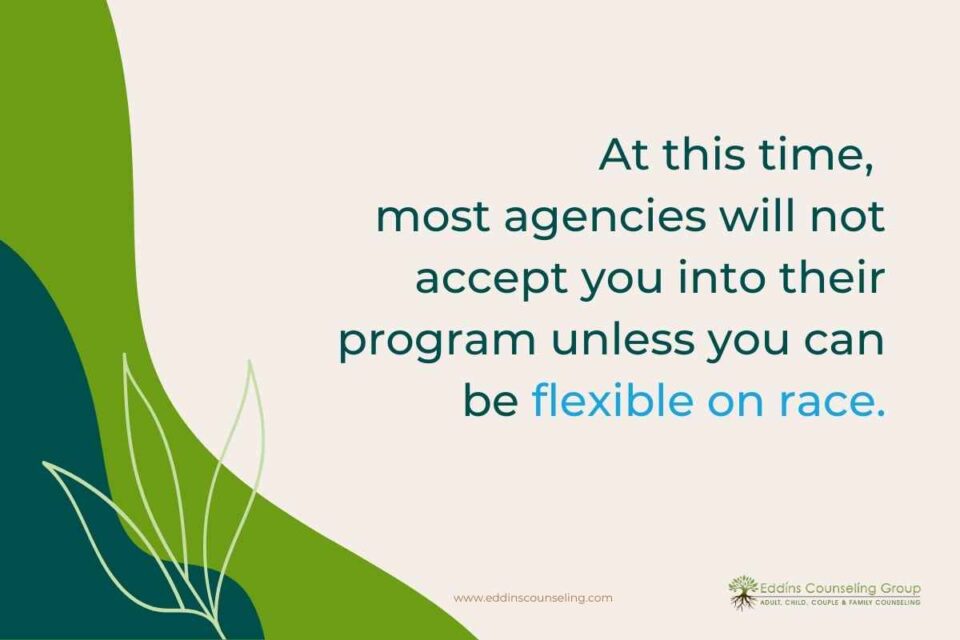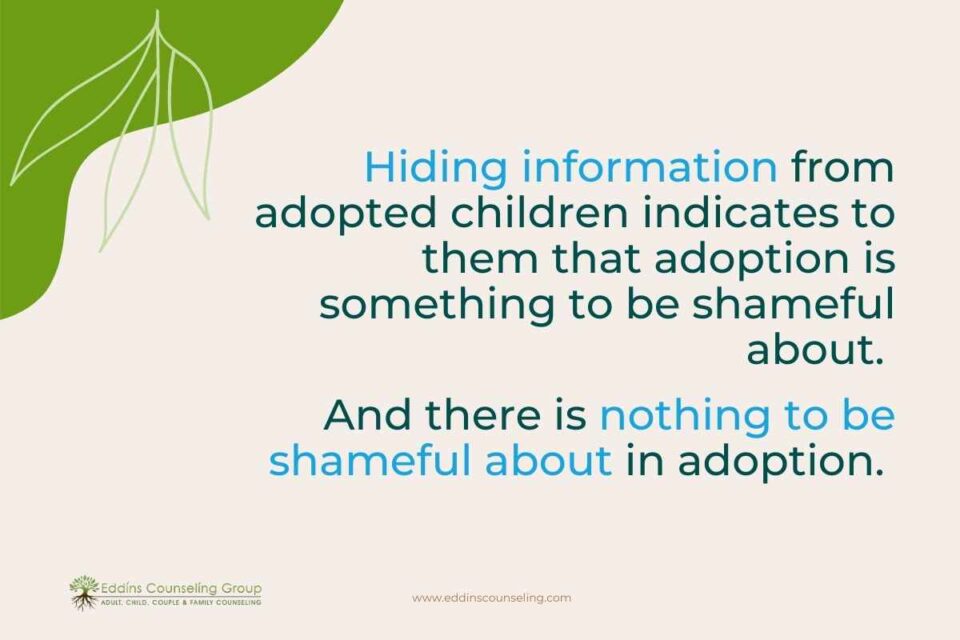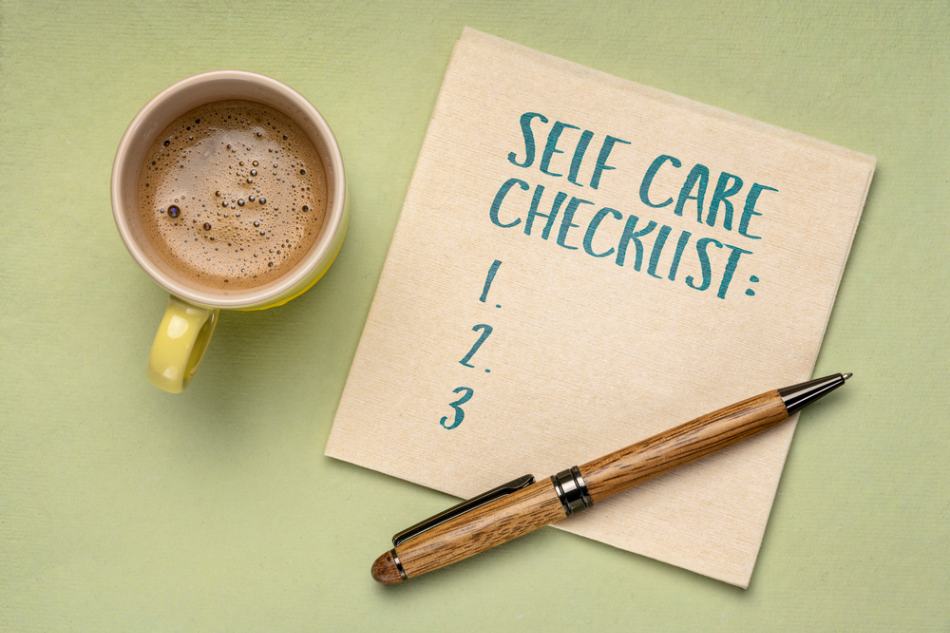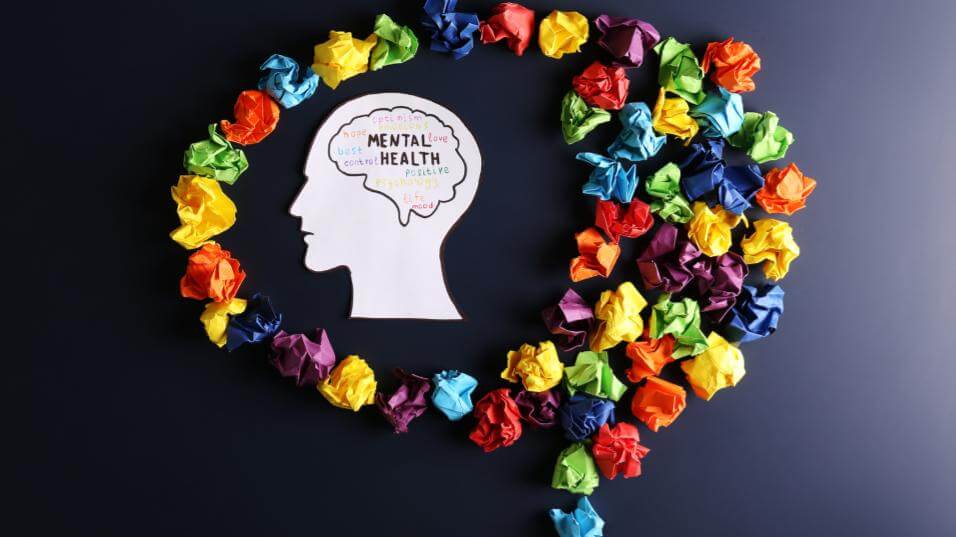November 10, 2022
Webinar: Alternative Paths to Parenthood
Written by Rachel Eddins
Posted in Parenting & Family, Self Help / Personal Development, Webinars and with tags: adoption, infertility
Are you struggling with infertility or family planning?
Perhaps you are still coping with a miscarriage or other loss.
Or, maybe you’re ready to adopt but don’t fully understand what the process looks like in a post-covid world.
Whatever brought you to this moment, one thing is for sure …
… You are ready to experience life as a parent.
To have a family, share your life with a child (or children), see the world through their eyes, and help shape the future.
Whether you are married, in a relationship, or going at it alone, you are ready to start a family.
Yet, you’re not quite sure how to move forward.
With so many options, regulations, and hoops to jump through, the world of adoption can be paralyzing.
Then, there are all the other questions you have about alternative methods to starting a family.
It also might feel like the clock is ticking.
The longer it takes to adopt a baby, the older you become. That could result in less energy as a parent or being less desirable to adoption agencies.
Yet, your desire is strong.
You are ready to become a parent in the next year or two.
All that’s standing in your way is an understanding of what to do next.
Does that sound like you?
Alternative Paths to Parenthood will help you:
- Learn all the different options for becoming a parent.
- Understand the key decisions along the way.
- Find the best and fastest path to becoming a parent.
- Facing your losses (miscarriage, infertility, etc).
- Discover exactly what the adoption process looks like today.
- Debunk common misconceptions about adoption.
This webinar is facilitated by Christi Megow.
Watch a replay of the presentation here.
Learn more about how to cope with infertility and manage the stress of infertility.
Here is a transcript of the webinar:
Welcome, everyone! I’m thrilled to be sharing with you a little bit of my knowledge of adoption.
The topic tonight is Adoption 101, and I’ve been asked not to only share about adoption, but about all of the different alternative paths to becoming a parent, including traditional adoption.
In fact, though, the majority of the methods we’re going to discuss do involve adoption in one way or another, which might surprise you.
A Little Bit About Me
Let me introduce myself, and then I’d like to get to know a little bit about you all. I’m assuming that those of you who are here tonight are struggling with infertility. I, too, once was in your shoes.
My husband and I tried for about three and a half years to conceive and carry a baby to term. We tried hormone therapy and IUI. We had some more diagnostics, which led to surgery for me, and then one round of IVF.
About three years into that whole process of being poked and prodded, we decided to explore other options. And for us, adoption was the best option.
So we started researching, and as luck would have it, we were put in touch with an adoption consultant here in Houston who we ended up working with, and she helped us to adopt our daughter almost 13 years ago.
About a year after becoming an adoptive mother, I helped found a post-placement adoption support group called Adoptive Families of Houston, and now I’m serving as its president.
More recently, I became an adoption consultant myself, and I’m now working alongside that wonderful adoption consultant who helped us so many years ago.
So tonight I’m wearing several hats:
- One as a person who struggled with infertility,
- One as an adoptive parent,
- One as the president of an adoption support group, and
- One as an adoption consultant.
I’d love to hear more about you guys and what brought you here tonight. So you can either turn on your video and unmute yourself, or you can write in the chat.
Some of this stuff might not apply to you, but hopefully, you’ll learn a little bit of something new.
Comment from a participant:
“My name is Brian, and I’m here with my wife Marissa, and we’re here just to learn a little bit more about adoption. We like to grow the family, but we’re an older couple. I’ve been through the process with a different person with IVF before, and I wasn’t sure about whether or not we wanted to go through that process with the poking and the prodding. I wanted to just open up a little more and learn more about the process, whether it was with the state or through my understanding, the private agency.”
Comment from a participant:
“Hi, I’m Brenda and I’m single. I tried a few rounds of IUI, and it wasn’t successful. I’m considering IVF, but I also wanted to look into adoption. Actually, I wanted to foster, just because I know from my understanding that it’s easier to adopt if you foster. Anyway, there’s so much information out there, it’s a little overwhelming.”
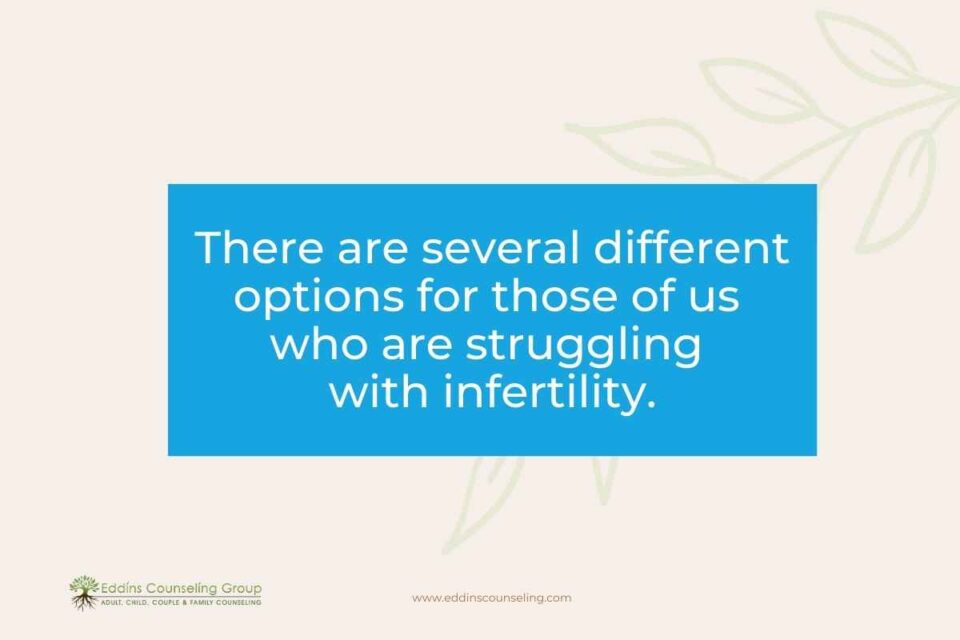
Alternative Ways To Become A Parent
- Donor sperm
- Donor egg
- Embryo adoption
- Surrogacy (Gestational Carrier)
- Adoption
Let’s start by talking about some of the different options for those of us that are struggling with infertility. Thankfully, we live in a time where there are a lot of options to achieve becoming a parent.
There is donor sperm or artificial insemination, donor egg, embryo adoption, surrogacy, or what we also call gestational carrier. And then there’s the more traditional adoption with private adoption through an agency or foster to adopt.
I go through each of these methods, I’m going to touch on the requirements for each, the pros and cons, and the special considerations for each. I’m reserving traditional adoption for last because that’s a subject I’m most familiar with and it sounds like it’s the one that you guys are most interested in learning about as well.
Donor Sperm
Requirements:
- A healthy woman who is fertile
- No requirements for recipients
Pros:
- Inexpensive option ($1K)
- You have control over selecting donor characteristics (ethnicity, education level, physical traits, etc)
- You get to be pregnant and carry the child
- You have control over the health of your child from conception
- There are no requirements for recipients
Cons:
- Your child could have multiple half-siblings (there is little regulation about sperm donation)
The primary requirement for this option is that your female parts all need to be in working order.
In fact, that’s basically the only requirement for this method, other than educating yourself about how sperm donation works and finding a reputable donor bank and donor.
The pros of this method are that it’s the least expensive, and easiest way to achieve a family outside of the traditional conception. You have control over selecting the donor characteristics. You get to experience being pregnant and carrying a baby to term.
Also, you have control over the health of your child from conception and there really are no requirements for recipients, and no IVF is really required for this scenario.
The cons are your child could have a large number of half-siblings if you select a particularly popular donor.
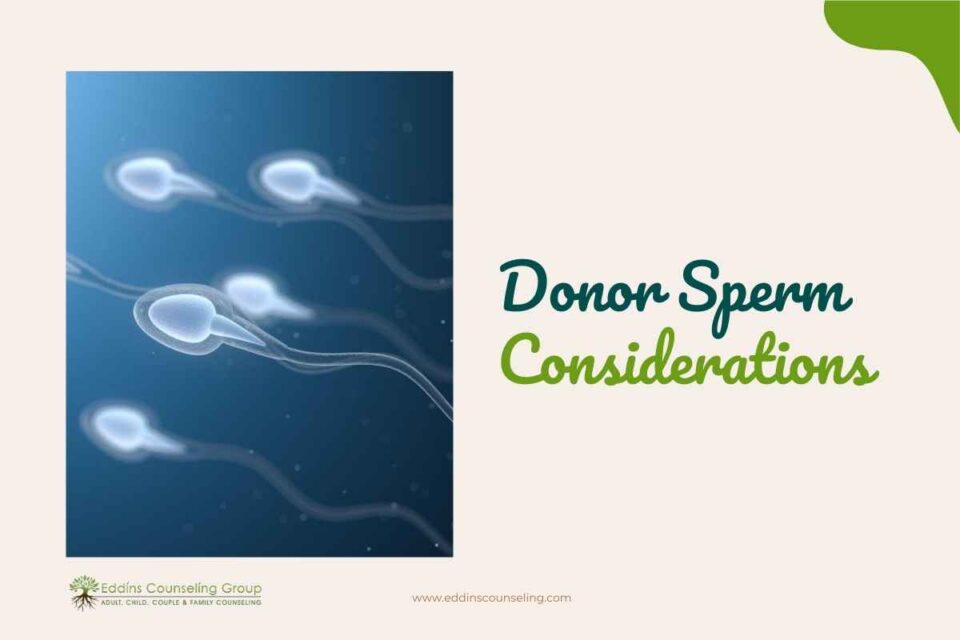
Donor Sperm Considerations
- Best practices
- Laws and regulations (or lack thereof)
- Anonymous or known donor?
- How to choose the best doctor?
- “I’m 20. I have 32 half-siblings. This is my family portrait.”
Other considerations you definitely want to learn about are the best practices. The American Society for Reproductive Medicine recommends that a donor be limited to 25 live births per population area of 850,000.
So just imagine in the city of Houston which has a population of 4 million (which I think we’re probably more than that), and if we rounded that 850,000 to a million, that would mean there could possibly be 100 births from a single donor. That’s a little weird, but something to definitely think about.
Educate yourself about the laws and regulations or lack thereof for sperm donation. You’d want to think about if you want an anonymous donor or a known one, and about what does that entail.
Learn about how to choose the best donor, and what attributes you need.
There’s a really interesting article called: “I’m 20. I have 32 half-siblings. This is my family portrait”. It’s published in the New York Times and it really shares and highlights the very real identity struggles that a child can face as a product of a sperm donor.
Adoption Education
One of the biggest things that I’m passionate about is adoption education. And even though people don’t think about sperm donation as adoption, it is half-adopted.
In the adoption community, we start educating our children about adoption and that they are adopted before they can even talk or walk or crawl or any of that.
This is done so that you educate yourself and you’re comfortable with it and you know how to talk and you know the language by the time they have the questions.
The other consideration is that the success rates of artificial insemination differ mainly based on a woman’s age and the fertility issues of that particular woman.
Donor Egg
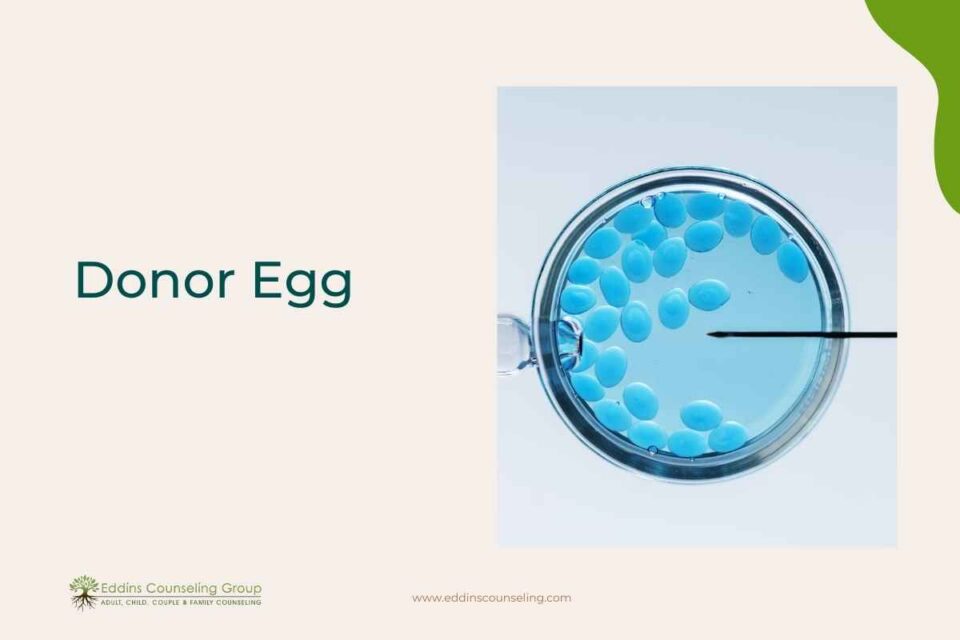
Requirements:
- A woman who is structurally healthy and can carry a child to term
- There is a matching process for donors and recipients
Pros:
- Relatively inexpensive ($5-8K)
- You have control over selecting donor characteristics (ethnicity, education level, physical traits, etc.)
- You get to be pregnant and carry the child
- You have control over the health of your child from conception
Cons:
- Requires IVF, possibly several rounds
The next method is the donor egg.
The first requirement for this method is a structurally healthy woman who can carry a baby to term. Women are actually structurally capable of carrying a baby much longer than their eggs are viable. I’m not sure that I knew that when I was going through the process, but I definitely learned.
The second requirement is there is a matching process for donors and recipients and this can happen through a clinic or an agency, much like an adoption agency.
The first pro is that this is a relatively inexpensive method compared with adoption and surrogacy. Just for the egg itself, it’s between $5-8K, and therefore it’s a relatively low-risk option in terms of financial risk.
Again, you have control over selecting the donor characteristics. You get to be pregnant and carry the child and have control over the health of your child from conception.
The con with this is you may have to go through several rounds of IVF to achieve a live birth.

Donor Egg Considerations
- Clinic or agency?
- Anonymous or known donor?
- Laws and regulations
- What makes a high-quality donor?
- 38-40% success rate (2020, Society for Assisted Reproductive Technology)
When considering this method, you have to decide where to go first. Do you want to go with a fertility clinic or do you want to go with an agency? You’ll want to learn what the pros and cons of each of those paths are.
Often clinics work with local egg donors within their own clinic, which means your child’s biological relatives may live in the same town or neighborhood as you. If you go through an agency, donors will be all over the nation or possibly the world.
You also have the option of having an anonymous or known egg donor, and you’ll want to know what that entails. It would be much like having an open adoption if you had a known egg donor versus a closed adoption.
For egg donation, there are more laws and regulations around that and you’ll definitely need an attorney that specializes in assisted reproductive technology.
The next consideration is what makes a high-quality egg donor. In addition to choosing a donor with those ideal characteristics, you also need to know what makes a high-quality donor. For example:
- Do they have children of their own?
- Have they donated other eggs that have produced a healthy baby?
- What’s the difference between getting a fresh versus a frozen egg donation?
There are advantages and disadvantages to each, so you’ll want to learn about those before deciding. The success rate for this method is around 38% to 40% and the source for this is the Society for Assisted Reproductive Technology.
Just like in sperm donation, you’ll need to learn how to educate yourself and your child about being the product of an egg donor or being half adopted. Also, that child may have some half-siblings and you’ll need to learn how to educate your child about that and if there are open relationships, and how to navigate those.
Embryo Adoption
Requirements:
- A woman who is structurally healthy and can carry a child to term
- There is a matching process for donors and recipients
Pros:
- Less expensive than traditional adoption ($8-20K)
- You have control over selecting donor characteristics (ethnicity, education level, physical traits, etc.)
- You get to be pregnant and carry the child
- You have control over the health of your child from conception
- 36% success rate (2020, Society for Assisted Reproductive Technology)
Cons:
- Requires a frozen embryo transfer
The third option we’ll explore is embryo adoption.
Embryo adoption came about as a result of IVF becoming more prevalent and families having extra embryos after completing the IVF process.
These families can choose to donate these embryos for adoption to other families.
The physical requirements for this method are the same as an egg donor and sperm donation. The only difference is if you don’t have a partner that can produce healthy sperm then this is a better option for you.
Another requirement is that like traditional adoption, there is a matching process between biological and adoptive parents. So both parties will have to complete applications and forms and then wait to be matched.
Ideally, counseling will occur with both parties prior to matching.
One of the pros is this is a less expensive option than traditional adoption. It’s between $8-20K. That cost really is dependent on whether you go with a clinic that would be less expensive and offers fewer services versus an embryo donation center or more like an adoption agency.
Again, you have control over selecting donor characteristics. You get to be pregnant and carry the child and you have control over the health of your child from conception.
The con is it requires a frozen embryo transfer and all of the physical things that go with that for a woman trying to get pregnant.
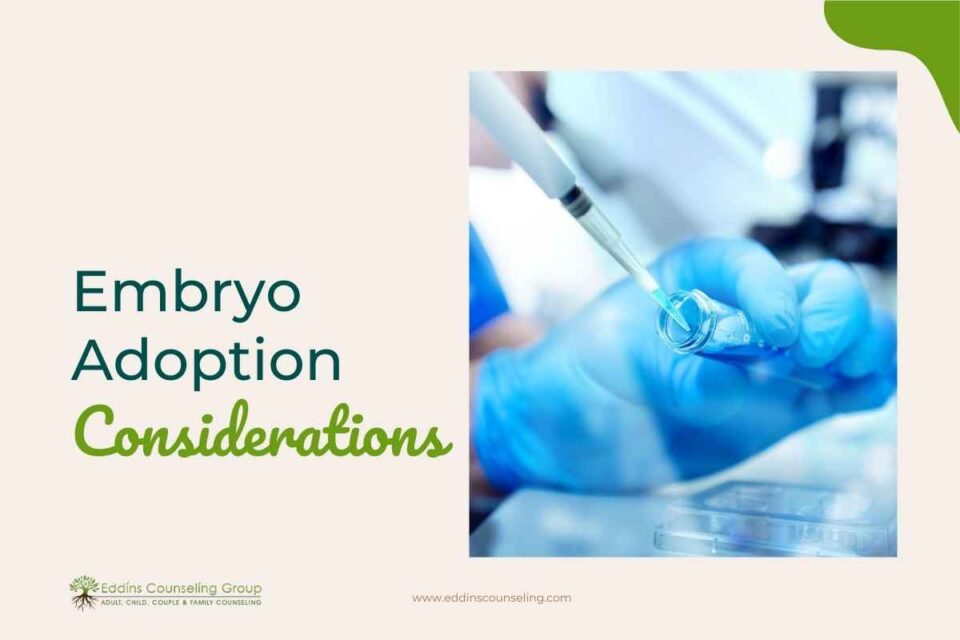
Embryo Adoption Considerations
- Clinic or agency?
- Anonymous or known donor?
- Laws and regulations
- What makes a high-quality donor?
- 36% success rate (2020, Society for Assisted Reproductive Technology)
Where do you go to get help with this?
Typically, you start at the fertility clinic but they’re also agencies, often clinics work with local embryo donors from their own clinic. This again means your child’s biological relatives may live in the same town as you.
On the other hand, agencies provide a lot more services like counseling for both biological and adoptive families. They provide screening for the health of the donor and the recipient as well as rigorous matching services. They may also have more donors to choose from.
The most recognized embryo agency is called Snowflakes and it’s actually a division of an adoption agency called Nightlight Christian Adoptions.
Another consideration would be whether would you want that donor to be anonymous or known. Much like traditional adoption, you and your donor can choose to have an open or closed relationship.
You’ll also want to know what the laws and regulations around embryo adoption are and need an attorney that specializes in assisted reproductive technology.
How do you know what makes a high-quality embryo donor?
In addition to choosing those characteristics we talked about, you’ll need to know what makes a good donor. How many children does the donor have? Have they donated other embryos that have produced a healthy baby?
This particular method has yielded about a 36% success rate. So that means that if you’re going with this method there’s a chance that you might need to do several embryo transfers in order to result in a live birth.
You’ll need to educate your child about what it means to be adopted. It’s vital in helping your child have strong self-esteem and a sense of identity.
Surrogacy (Gestational Carrier)
Requirements:
- Healthy donor egg is most important factor
- Gestational carrier must be age 21-40
- Gestational carrier must meet certain fertility criteria
Pros:
- You can choose the genetic material used to create your child (your own or donor material)
Cons:
- The most expensive option ($80-120K)
- Legal concerns
- You will not get to be pregnant and carry the child
- No direct control of health of child during pregnancy
This next option is surrogacy, also called a gestational carrier.
This option can take different forms. The embryo may be a product of the prospective parents or the egg may be from a donor or the sperm may be from a donor or both may be from a donor or as a product of embryo adoption.
There are also two specific types of surrogacies. One is called traditional and the other is called gestational. A traditional carrier is genetically related meaning that she is donating her egg as well as her womb to carry the child. But the more common one is gestational carrier meaning that the surrogate has no genetic relationship to the child.
The most important factor in successful surrogacy is the healthy donor eggs. The gestational carrier must be aged between 21 and 40 and that carrier will have to meet certain criteria in fertility.

The pros are you can choose the genetic material used to create your child, your own genetic material, or donor genetic material. The con is this is the most expensive option. I put $80K to $120K, but really it’s $100K, and upwards from what I’ve seen.
The process can require a combination of sperm donation, egg donation, IVF, and embryo transfer as well as legal fees and fees for the carrier.
If using your own eggs, this could also require overstimulation and egg retrieval. There are also legal concerns to educate yourself about.
For instance, it’s illegal in some places to be a gestational carrier.
Also, it’s interesting to know that gestational carriers have parental rights to the child that they bear. So those rights need to be terminated. And again, that would require a specialized attorney.
The other con is you don’t have direct control over the health of your child during the pregnancy. You’re just going to have to trust that the gestational carrier that you choose is doing her job.
The biggest hurdle when talking about surrogacy is the financial one. You’ll also probably need to educate yourself a lot and do a lot more research on this method versus other methods because there are so many factors to consider.
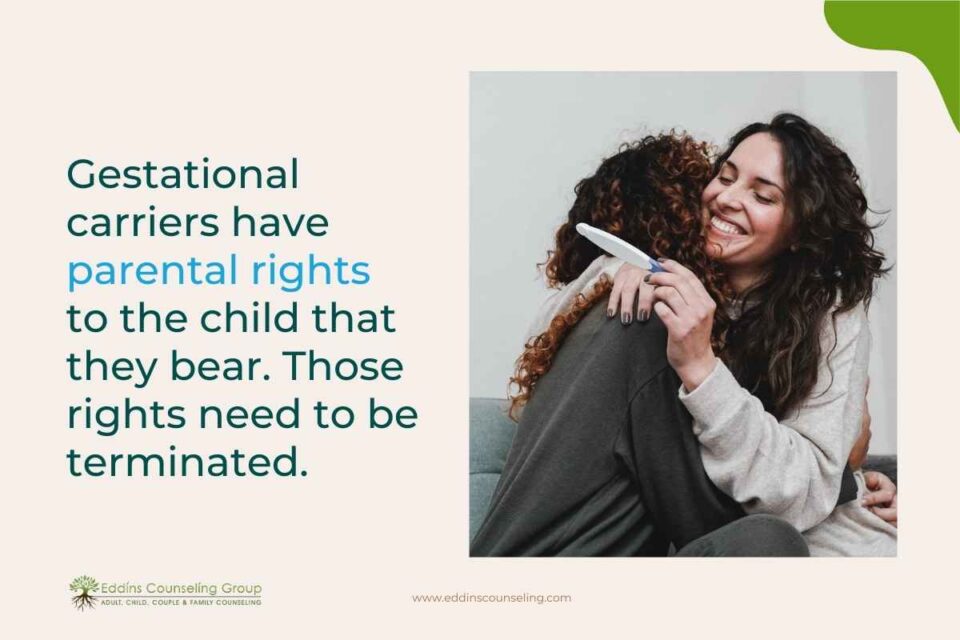
In some situations, the gestational carrier maintains a relationship with the family and the child, and you’ll want to learn more about how to handle such a relationship if that’s an option.
The good news about this option is that the reported success rate is about 75%, so that’s huge. You’ll need to educate your child about what it means to be a product of surrogacy. And the good news is there are lots of books out there because it’s become more common. I’m sure that you can find something on Amazon.
Adoption
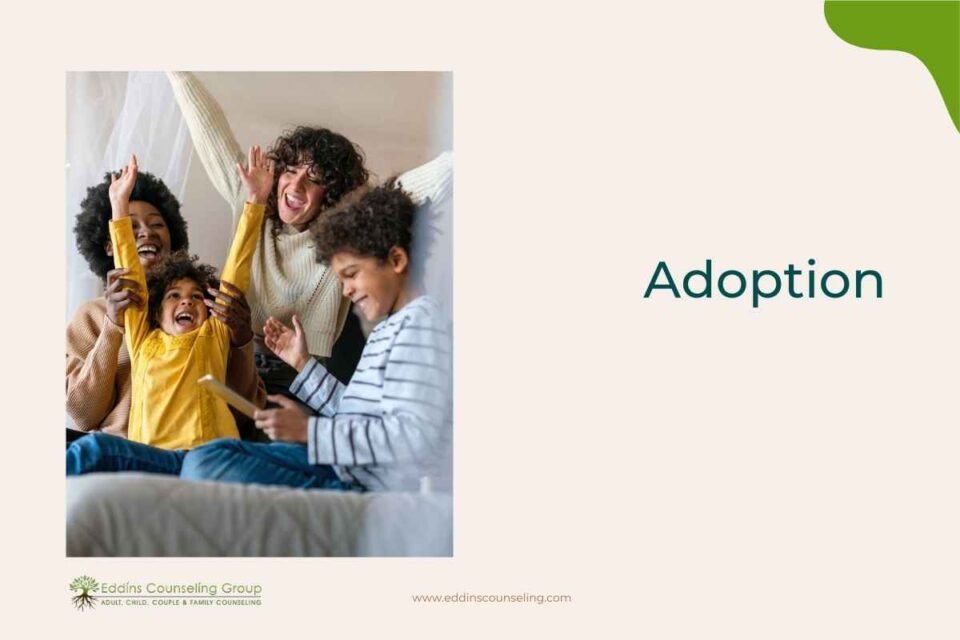
For this section, I’ve framed it up a little bit differently where I’m going to ask four different questions to help lead you down a path that might be the best path for you for adoption.
Question 1: What kind of child are you willing to adopt?
-
- Healthy or special needs?
- Newborn or older?
- Same race or transracial?
Healthy or special needs?
The first question is: what kind of child are you willing to adopt?
Do you want a healthy child or do you want a special needs child? A special needs child is usually a child that the agency feels would require extraordinary parenting due to physical, emotional, or mental disability.
It could take a lot of time, energy, and resources to parent a child like this.
I would really encourage you to do some research and talk to other families who have special needs kids before you adopt one yourself.
Newborn or older?
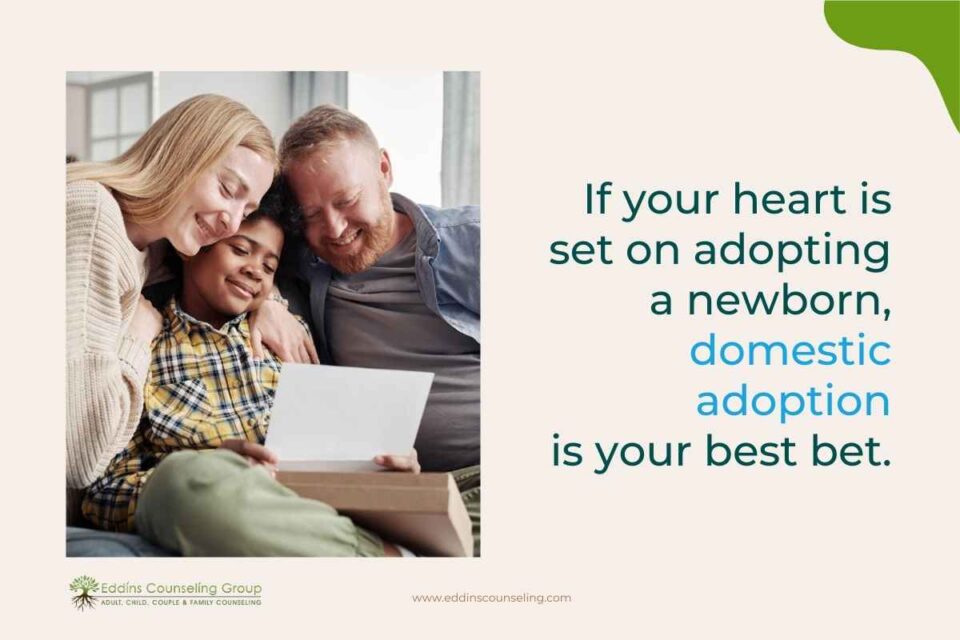
The next piece of this question is do you want a newborn or are you willing to adopt an older child (over two years old)?
You can get an older child domestically or internationally, but if your heart is set on a newborn, domestic really is your best bet.
This is because international programs currently are only offering children over two years old or children with special needs.
Same race or transracial?
The next piece is what race of child would you be willing to consider?
Most couples thinking about adoption, wish to adopt a child of their own race or ethnicity, and this is perfectly normal and acceptable.
But what you need to be aware of is that if you want to adopt a full Caucasian child, you’ll probably wait longer than someone who would be willing to adopt a full Hispanic child, for instance.
Most agencies, honestly, at this time, will not accept you into their program unless you can be flexible on race.
However, I do encourage you to make your decision based on knowledge and exploration rather than fear or ignorance. For those of you who have greater flexibility in regard to race, I’d first encourage you to talk to families who’ve adopted transracially (that’s what we call it if you adopt a child outside of your race) and find out what those issues are.
Adopting transracially, at the very least, involves bringing a child from one culture into another, and you need to be aware of the ramifications of that, as well as many other issues that go along with it.
If you’re willing to consider African American, I highly recommend you read the book “Brown Babies Pink Parents” by Amy Ford. She discusses many of the issues involved in adopting an African American child, everything from cultural implications to how to care for their skin and hair. It’s a really awesome book.
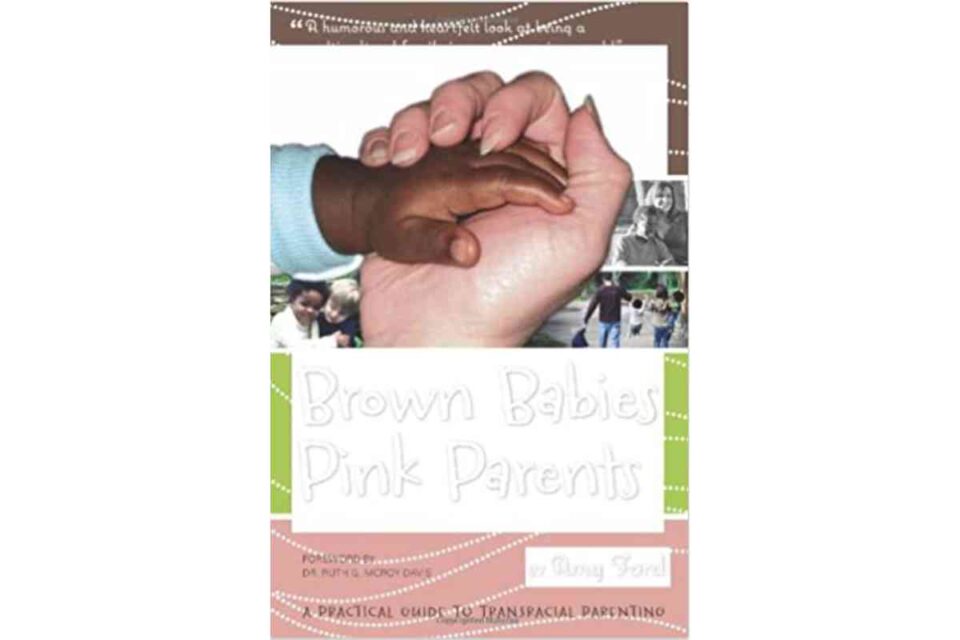
Question 2: Do you want to adopt domestically or from another country?
The majority of adoptions in the United States are domestic, and with the pandemic, that is even more true. Personally, I don’t recommend international adoptions at all right now because it’s in such a state of flux.
Ever since the United States ratified the Hague Treaty in 2007, the number of international adoptions has declined each year. While the intentions of the treaty are good, it is making the adoption process more complicated for everyone involved with more requirements and restrictions.
The Pandemic further slowed international adoption because of low birth rates and all of the added travel restrictions.
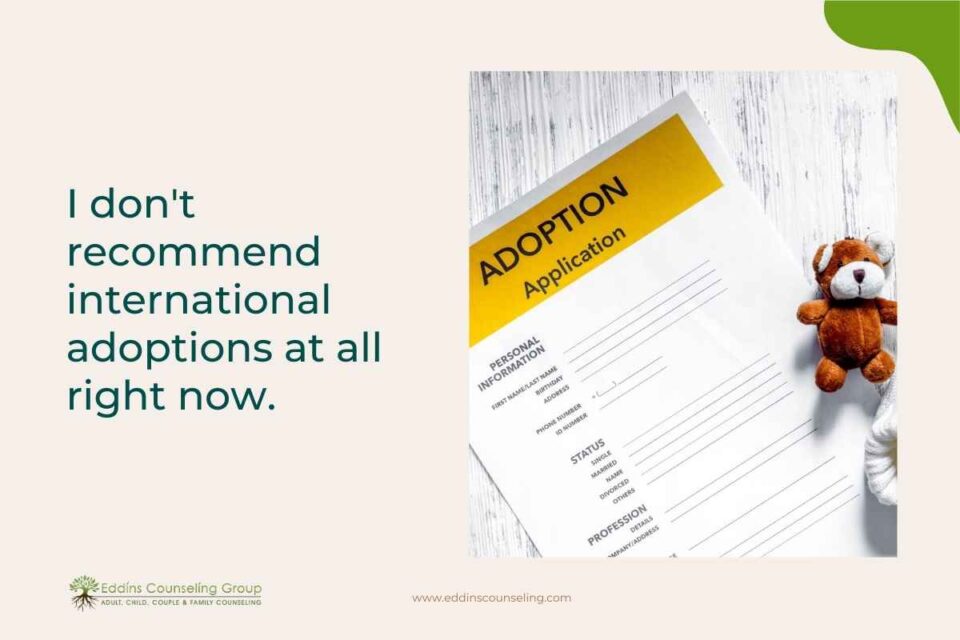
Question 3: What kind of domestic adoption do you want?
- Public Agency
- Private Agency
The third question is if you decide that domestic adoption is right for you, what kind of domestic adoption do you want? In general, people usually look to go to a public agency or a private agency.
Public Agency
A public agency is operated by the county or state in which you’re located, and it’s supported by tax dollars. These agencies are usually responsible for older children, sibling groups, and most special needs cases.
An example of a public agency in Houston is Child Protective Services or CPS. They take care of children who have been removed from the home due to abuse or neglect.
Adoption services through a public agency are usually free or available for a modest fee since the services are funded through state and federal taxes.
Private Agency
Private adoption agencies are licensed by the state in which they operate and are principally supported by the fees they receive from adoptive parents. The majority of these adoptions are for newborns. Each agency will set its own eligibility requirements for adoptive parents.
You may have to meet certain age requirements, marriage requirements, be of a particular religion, be medically unable to conceive a child, and be of good health.
In both cases, you have to have no criminal record or child abuse allegations. They also do a background check on you.
Don’t be discouraged if you do not meet all of these requirements. The criteria vary tremendously from agency to agency. So shop around. Usually, you can find an agency whose requirements you do meet.
Private Agency Fees
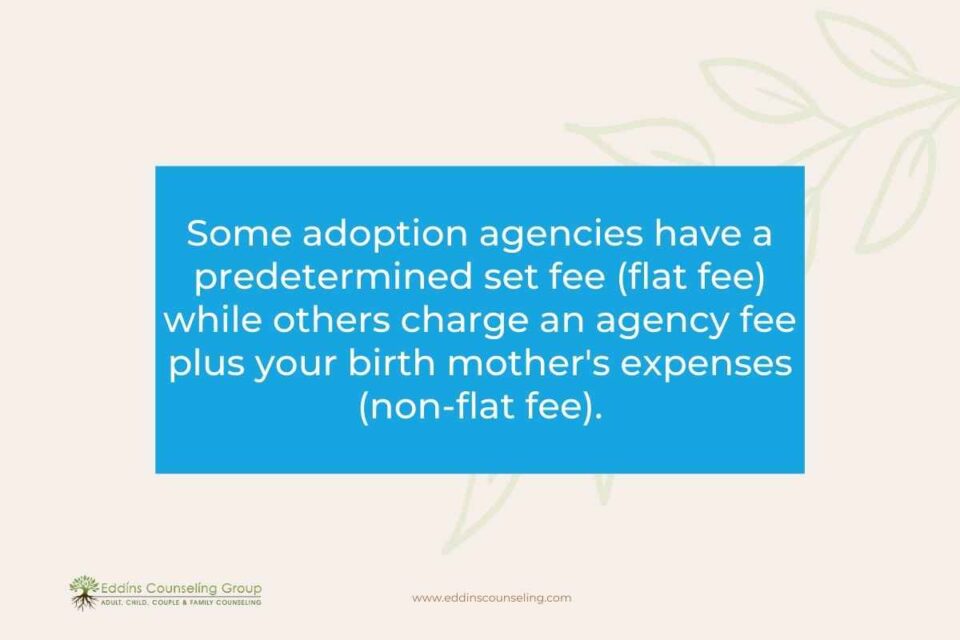
The fees charged by private agencies can vary tremendously. They can range from $45,000 at the low end to $65,000 at the high end, with an average of around $50,000.
Some agencies have a predetermined set fee, or what we like to call a flat fee, while others charge an agency fee plus your birth mother’s expenses, which we call non-flat fees.
Personally, I prefer flat fee agencies because all of your money is protected. This means that if you are matched with a birth mother and she changes her mind after the birth of the child and says that she wants to parent the child, you don’t lose any of your money. All of your money is applied to the next match, the next child.
In a non-flat fee situation, a portion of the money that you have to pay is for that birth mother’s expense, which could be, let’s say, $10,000 of the $50,000.
If the birth mother changes her mind in a non-flat fee agency, then you’ve lost $10,000, and you’re going to have to pay the birth mother’s expenses for the second situation that comes up.
Facilitators
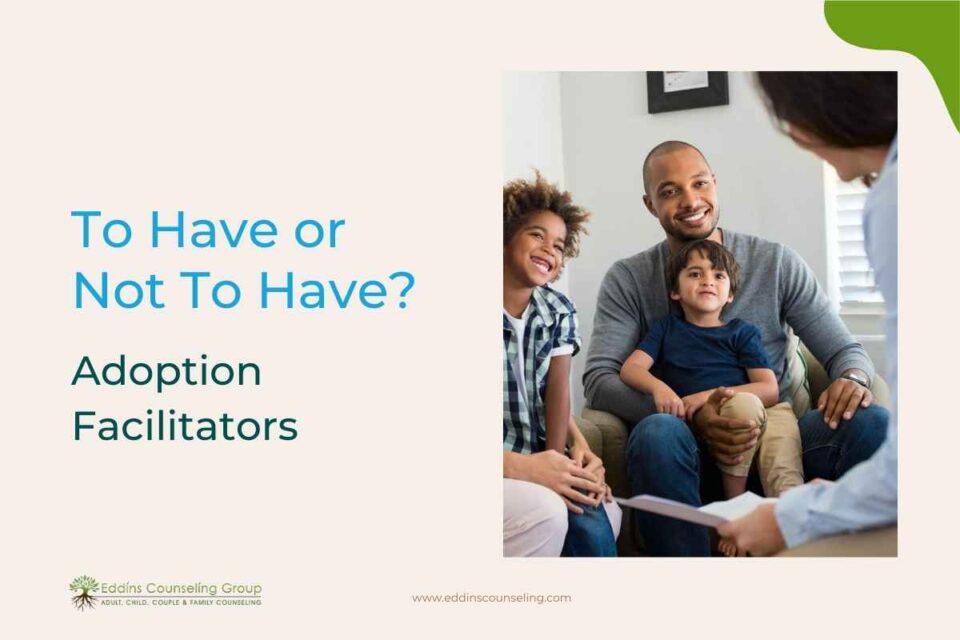
I want to make mention of facilitators because if any of you have been on the internet, you’ve probably run across them and have not even realized it is an adoption. A facilitator is neither an adoption agency nor an adoption attorney. They can be an individual or a company.
Some facilitators have some training in adoptions, such as an adoption counselor, while many have no training or experience at all. Basically, their main purpose is to find a birth mother for you and the adoptive parents.
There’s a great deal of controversy among adoption professionals regarding facilitators.
Some feel facilitators provide a legitimate service, while others contend that their services are unethical because they’re being paid to find a baby. As a result, many states have enacted laws forbidding facilitators from profiting financially for simply finding a baby.
Facilitators, in fact, are illegal in Texas, but that doesn’t mean that you can’t go to one in another state and use it as a Texas resident. One of the reasons many adoption professionals criticize facilitators is the small degree of protection for their clients, which would be the adoptive parents.
Both attorneys and adoption agencies are the only entities that have the legal power to place a baby.
They must be licensed by the state, usually after background investigation and demonstration of competency.
Facilitators, however, do not require any special licensing. Typically, there are no educational or training requirements. As a result, there is often no state licensing body looking over their shoulder to be sure they are acting competently.
On the positive side, facilitators may find a birth mother for you faster than an adoption agency, but most of the contact a facilitator has with a birth mother is over the phone because they’re working with people from all over the country. Chances are they have never met the birth mother in person. If you choose to work with a facilitator, I would highly advise that you fly to where the birth mother is, and check her out in person before you agree to be matched with her.
I would strongly advise that if you are researching adoption agencies, be sure to ask if they are a licensed adoption agency or a facilitator, especially if they are located in California. Just because their name sounds like an agency or law firm does not mean that they are.

Question 4: What level of openness are you comfortable with?
- Semi-open
- Fully open
- Closed
I kind of alluded to this throughout the presentation.
So this question can apply to egg donation, embryo donation, or even sperm donation, but I think it’s less common with sperm donors.
The term open adoption is subject to interpretation because there are so many different levels of openness. It’s really on a spectrum.
Any agency you call will tell you that they practice open adoption, but you really need to zero in on what level of openness they practice.
Semi-open
Semi-open involves one or two face-to-face meetings with the birth mother before the delivery and/or at placement. So that would happen in the hospital. Pictures and letters are shared through the agency for up to 18 years until your child is an adult.
Fully open
Fully open adoption is when the adoptive family and the birth parents disclose all identifying information. They communicate directly with each other through phone calls, emails, and text messages. They have face-to-face meetings with the birth mother before and after the birth for as long as both parties feel comfortable.
Closed
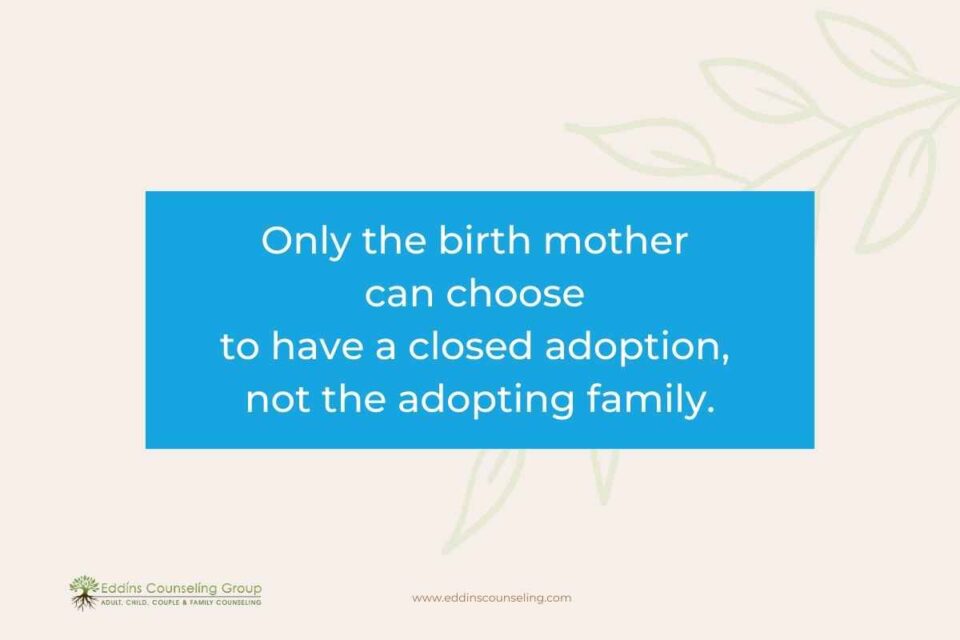
Closed adoption is when there is no contact between the birth mother and the adoptive parents. Only a birth mother can choose to have an adoption closed, not the adopting family.
These days, more and more birth mothers are wanting fully open adoptions with in-person visits. So agencies will want to prepare you for fully open.
That said, it doesn’t mean that you’ll definitely have a fully open adoption. In fact, I’ve known several cases where families expect an open adoption because that’s what the agency practiced, but they ended up with a closed adoption because that is what the birth mother wanted.
I think that people are a little more educated about open adoption now than they have been. So forgive me if I’m saying something you already know, but there are some people who are very sensitive about it.
I urge you to read and learn a lot by talking to adoptive parents, if you know any, and see what their experiences are.
Fear of disclosing your identity or meeting the birth mother is a very common reaction initially.
But once you do some reading about it and talk to adopted parents about it, it’s not as scary as it sounds. Actually meeting a birth mother just one time can do a lot to allay your fears that she may come back to reclaim her child, which cannot happen.
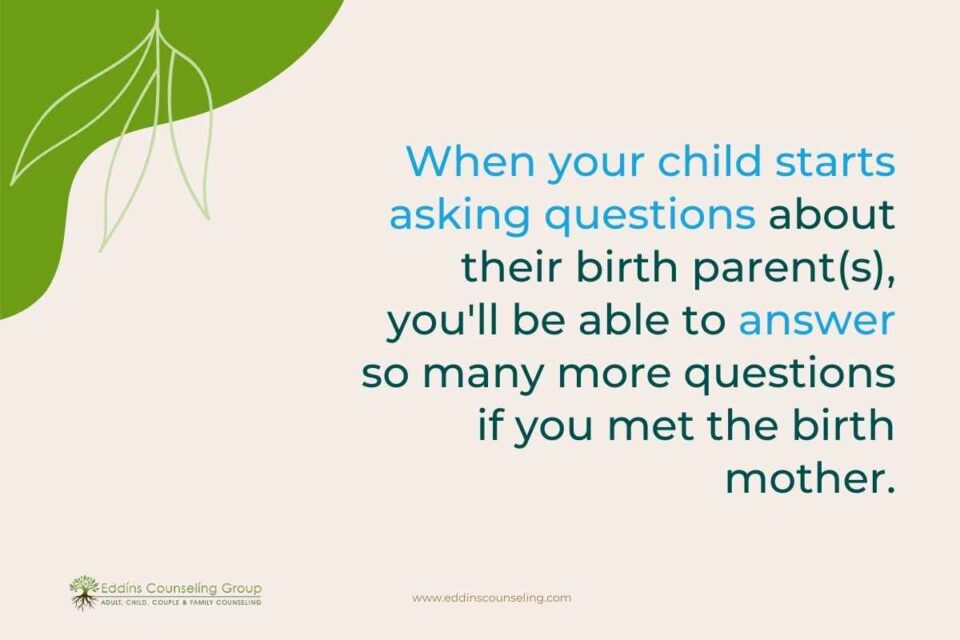
Actually, most mothers honestly don’t want to do that because the whole reason that they’re placing their child for adoption is that they’re in a difficult situation and they really can’t care for the child.
Later on down the road, when your child starts asking questions about his or her birth parents you’ll be able to answer so many more questions if you know and have met the birth mother.
So when you’re looking for an agency, talk with them about openness and try to find an agency that has the same philosophy about openness as you do.
I know this is a big topic and I like to talk about it because my daughter actually has an open adoption and I’d be happy to share with you more about that.

Comment from a participant
“My wife and I would go into this with already some stereotypical notions about open adoption. And it’s interesting to hear that the adopted mother is the one that only one can choose closed. So if you wouldn’t mind sharing your story.”
I think that in the ‘70s when the feminist movement became more prevalent and women were allowed to take birth control and had more control, the women that were able to place their children for adoption suddenly realized that they have more control and that they want to know that their children are being cared for.
So things started to turn. Really though, it started more recently, like in the ’80s.

Psychologists have done a lot of studies and have found that it is so much more healthy given the right situation. Not all situations are right for this, but it’s really healthy to have a relationship with the birth family both for the birth mother and the child and the adoptive parents.
The reason this is good for the birth mother is that she knows that her child is being cared for and is loved.
In my daughter’s case, she knows her birth mom. She knows that her birth mom loves her and made the decision to place her for adoption because she loved her so much and she wanted to have a better life than she could provide for her herself.
And she gets to see that. She actually has half-siblings that she’s met and sees the circumstances that they’re living in and is very grateful for the situation she’s in.
For the child, being adopted is part of who she is.
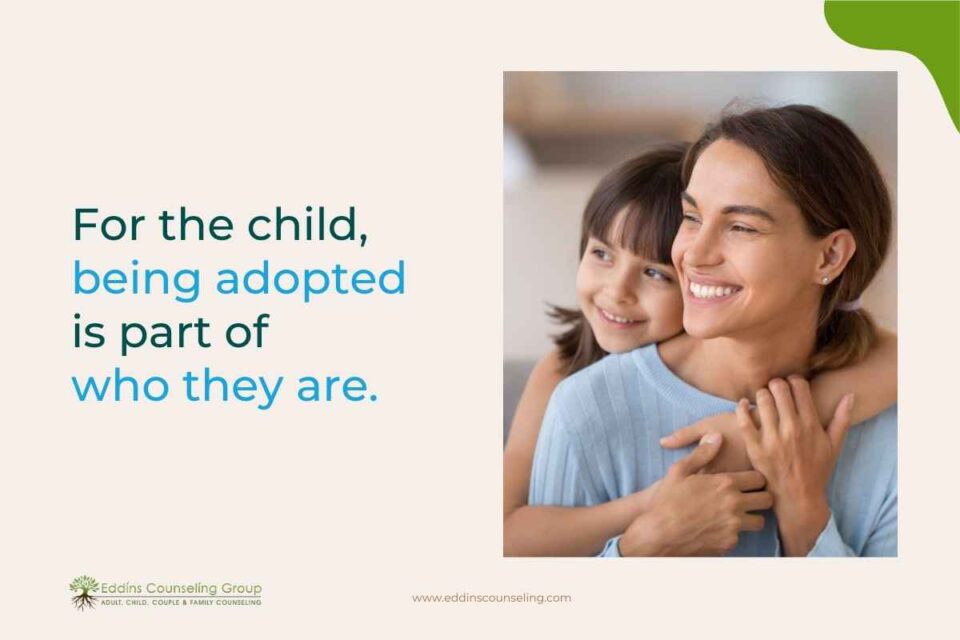
She is very different from us. Now, not all adoptive children are. Some are very similar, but my daughter is very different from me. She has a very different temperament. She has a very different way of doing things. Her interests are different. Some things do overlap.
So it’s really cool to see what nature versus nurture is, and how it all happens. But it gives her a sense of self. She knows where she came from, and that’s not a question.
For some adoptees, not knowing anything about their background is a struggle. It really impacts their self-esteem. Particularly in transracial adoptions, which can be tricky. Especially if, for instance, a white family adopts a black child, and they live in an all-white neighborhood and they go to an all-white school and all the different social things that they do, they’re always the minority.
They’re raised in a family with a white culture. They don’t have a whole lot of exposure to black culture.
And then, they go off to college and they finally are exposed to black people. They don’t fit in with the black people that they’ve met because they don’t relate to them. They don’t understand the black culture.
So suddenly there’s this whole education and self-discovery process that has to happen, and then that child will have to come back and educate the parents about all the different issues that a black person in America has to face.
That’s why it’s so important to read about transracial adoptions and what it is that we as parents can do to help our kids have a very strong identity and sense of self so they don’t have to discover it or figure it out themselves in their young adulthood.
The other piece I left out is it’s really great having an open adoption for the adoptive parents also. Because one, when my daughter (if she ever says) “Well, you’re not my real mom.”, I’ll say: “Well, guess what? Your real mom chose me to be your mom. She gave me authority. She wanted me to be your mom. So that doesn’t fly.”
It’s kind of like I’ve been blessed by her birth mom to parent her, and she’s entrusted her to us. And we feel good about that. We know that we didn’t take her away from her mother.
And when my daughter has questions or we have health concerns, I can text her birth mom and say:
- “Molly, what do you know about this?
- Have you ever had this problem before with your health?
- Or have any of your kids experienced this?”
It’s really nice to have that ability.
The relationship between the adoptive mother and the birth mother is kind of like an extended family, like cousins. In our case, her birth mom lives in a different state, so we don’t see her super often. But whenever we get together, you can just tell there’s love there. And having more people love your child is never a bad thing.
Comment from a participant:
“I have a slightly different question. My understanding is more about traditional adoptions where some folks would keep their adopted child in the dark about being adopted. And my understanding these days is that the philosophy is to be as open as early as possible. But can you elaborate on that a little more?”
If you are withholding information about your child from your child, and they find out about it later on, it really breaches that trust between the child and the parent, and that rocks their world.
If you’re hiding information from them, it indicates to them that it’s something to be shameful about. And there really is nothing to be shameful about in adoption.
I mean, we wanted to be parents but we weren’t able to be parents. And there was a birth mother who was pregnant and was not able to care for the child.
Those two difficult situations came together to create this really beautiful union in the form of this child being adopted. It’s just so healthy for them to know from the get-go.
Adoption – Private Agency
Requirements:
- Must meet various requirements (differs by agency)
- Apply and can be accepted by an agency
- Home study
- Criminal background check
- Create an adoption profile book
Pros:
- Can adopt an infant
- Once accepted by an agency, guaranteed to be placed with a child
- You have the right to say yes or no to a situation
Cons:
- Agency adoption cost $45-55K
- You have no control over prenatal care of child
For a private agency, you have to meet various requirements.
You have to apply and be accepted by the agency. The applications can be quite lengthy. You have to have a home study. You would need a home study, in both private and public adoption agencies. A home study is usually where you have to fill out a lot of information, kind of like an application.
They make sure that you’re financially stable. They make sure that you have good health. A social worker will actually come to your house and spend about 3 hours with you and interview you and inspect your home to make sure that it’s suitable for a child to be raised.
You’ll also need a criminal background check.
In the case of private agencies, you have to create what’s called an adoption profile. And this can take the form of a physical book or a lot of times they’re also online on the adoption agency’s website. So think of this as your marketing piece that a birth mother looks at to choose a family for her child.
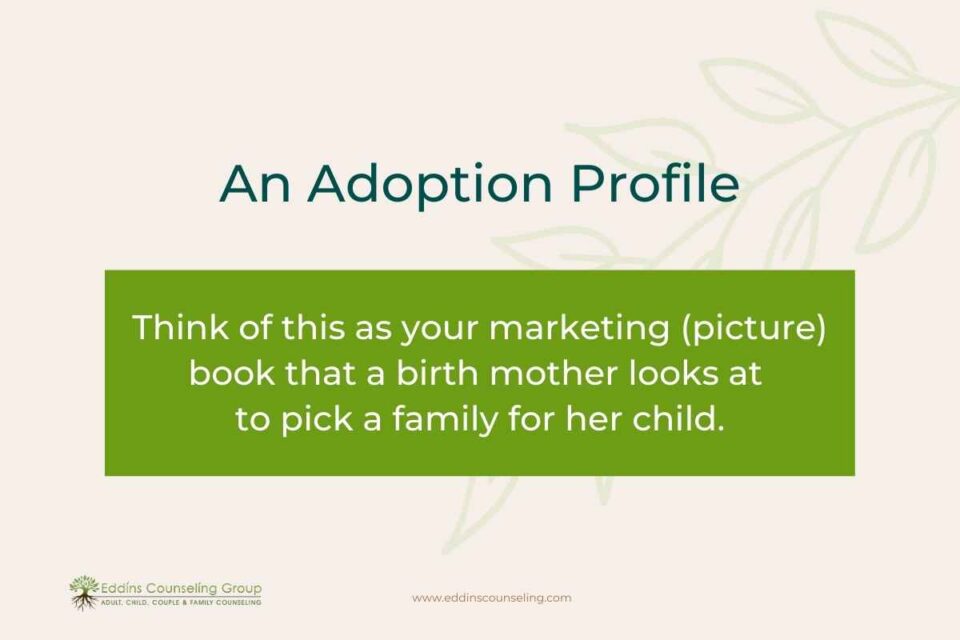
Creating this adoption book is probably the hardest piece of the whole adoption process other than waiting because you want to put your best foot forward.
You want to help the birth mother imagine what it would be like to be a part of your family.
There are people out there who can create books for you and help you. That’s actually something that I do myself.
With the private agency, the pros are that you can adopt a newborn.
Another pro of working with a private agency is that once you’re accepted by an agency, you’re pretty much guaranteed that you’re going to be placed with a child.
Now, they can’t guarantee a time period, but you will most likely be placed with a child. So to me, that was like the light at the end of the tunnel when we were struggling with all the infertility. We never knew if it was going to work or not. You never know.
But by going with a private adoption agency, I knew we were definitely going to get a child eventually.
The other important thing to note is any situation that’s brought up to you, you have the option of saying “Yes” or “No”. It’s always your option. You do not have to be forced to accept a situation that you’re not comfortable with.
The con with agency adoption is they are pricey, but not as much as surrogacy, and you don’t have prenatal control, or you don’t have control over how your child is cared for prenatally.
Some other considerations are you’ll need to educate yourself and your child about what it means to be adopted, and you also want to educate yourself about managing an open adoption.
There’s a great book called the “Open Adoption Experience” by Lois Molina. She was one of the most well-known adoption writers/authors/educators out there.

Adoption – Public Agency
Requirements:
- Less stringent requirements
- Home study
- Criminal background check
Pros:
- The opportunity to help a child in need
- Almost no costs
- There are lots of children who need homes
Cons:
- Reunification is agency’s #1 priority, not adoption
- Harder to be placed with infant
- You may have to foster a few children before being placed with one that is “legally free” to adopt
- Your child might have suffered trauma prior to placement
- You will need to educate yourself about raising an older child
As far as the public agency, the requirements are less stringent. The age requirements are much more flexible. You don’t have to be married. Your sexual orientation doesn’t matter. There are no religious requirements. You will still have to have a home study, and you will still, of course, need that criminal background check.
The biggest pro is the opportunity to help a child in need. You’re helping a child that truly needs you.
It’s almost no cost because, as we said, it’s funded by the government, and there are lots of children who need homes.
The number one con is that reunification is the agency’s number one priority.
That means placing the foster child back with their biological family. It can be hard to get an infant through public agencies as well, and in some cases, you may have to foster a few children before you’re placed with one that is legally free to adopt. By legally free, I mean that the parental rights have been terminated for the child and they are free to be adopted.
Another biggie is your child might have suffered trauma prior to placement. That requires a lot of education and raising a child that has been through trauma.
You also need to educate yourself about raising an older child. Also, in some cases, it’s not as common, but you may need to learn about managing an open relationship with the birth family.
I’ve heard of several cases where the grandparents will still have a relationship with a child, but every case is different.
Homework
- Read all that you can about each method
- Talk to other people who have become parents using the method you are considering
- Interview clinics and agencies
- Join a support group
- Retain a qualified adoption consultant
Now that we’ve covered all the different paths to parenthood, I want to send you away with some homework.
Read all that you can about each method
Read everything you can get your hands on about each method of becoming a parent that you are considering not just for now, but also for the future. What are some of the future issues that you may have to deal with as your child grows and develops?
As I said before, you should tell your child from day one that they were adopted and what that means. By not sharing this vital piece of information with them, it implies that it’s something to be ashamed of and hidden, but on the contrary, it’s an important piece of who they are and something they should know and own.
Talk to other people who have become parents using the method you are considering
Also, talk to other families who have chosen the path you’re considering. You can learn so much from them about their experiences and about related issues they may face as their child grows older.
Interview clinics and agencies
Definitely call clinics and agencies and interview them. Have a list of questions ready and take detailed notes on what they tell you. Every clinic or agency is different, and it’s your job to find one that matches your philosophy.
Join a support group
For infertility support, there is Resolve, which is a national infertility group, and they have local groups throughout Houston. For adoption support, join my group Adoptive Families of Houston.
We provide a supportive environment where adoptive parents and adoptees can feel comfortable discussing issues related to adoption.
We have educational programs for parents, we have monthly play groups for the kids, and an annual family picnic. It’s a really wonderful way to get to know adoptive parents and for your child to become friends with other adoptees.
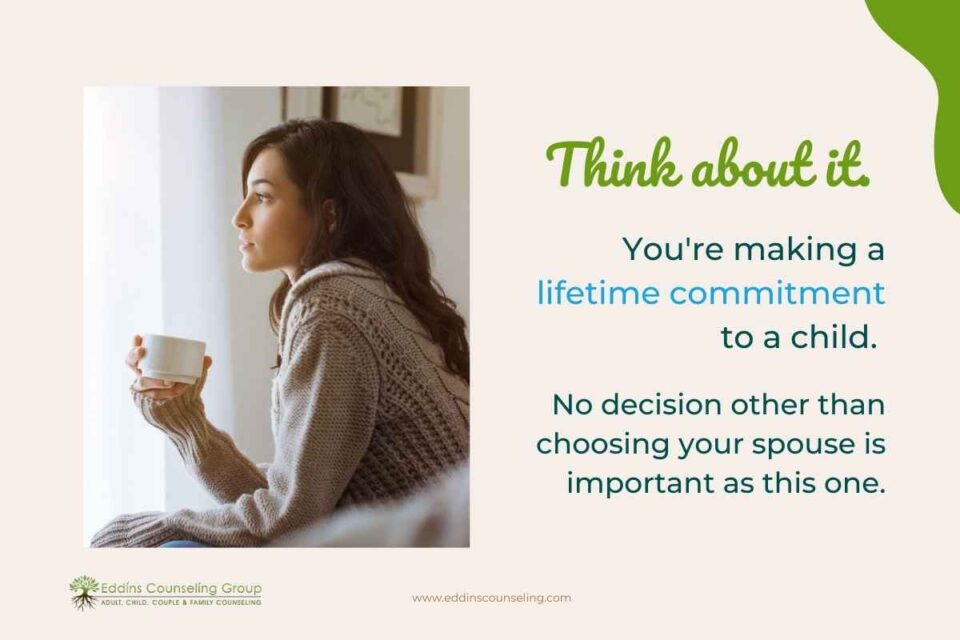
Retain a qualified adoption consultant
My last point is a little more specific to adoption. Consider retaining a qualified adoption consultant like me.
If you’re feeling overwhelmed and totally confused about the whole adoption scene, hiring an adoption consultant may be very beneficial.
An adoption consultant takes the mystery out of adoption and holds your hand through the entire process. From becoming educated about adoption to choosing an agency to filling out paperwork and making that profile that we talked about to discerning about a potential match. And then finally to adoption finalization.
We will help you with all of this so that the outcome is a happy, joyful event for everyone involved.
Comment from a participant
So, an adoption consultant in the industry is someone who helps you through the process in addition to selecting an agency, working, or identifying the right appropriate agency?
The thing that’s hard, especially during the pandemic, if you’ve gone through infertility and you have faced a lot of disappointment already, calling one agency after another and finding out that they have wait lists and that they’re not going to take you is just as heart-wrenching.
Working with someone who already knows the agencies and which ones are accepting clients and which ones aren’t and which ones will work with single people versus married people versus Christians versus nonreligious is really helpful.
The fee for an adoption consultant is minuscule compared to the overall cost. I think it’s a really wise investment personally because you could lose a lot of time, money, and emotional toll sometimes by doing it yourself. You might go down the wrong path or feel like you’re spinning your wheels.
I can do a 1-hour consultation where I educate you more about adoption, and then you can decide if you want to work with me.
We have a package plan if you decide to employ us for adoption, where we hold your hand through the whole process. But it’s just an hourly fee, basically, so if you want to learn more, that’s a really inexpensive way to do it.
Thank you so much and good luck to all of you. I know it can be a really emotional process going through trying to become a parent when it seems so easy for everyone else around you.
So hang in there. It’ll happen for you if you want it to happen. you just have to be persistent and stay focused.
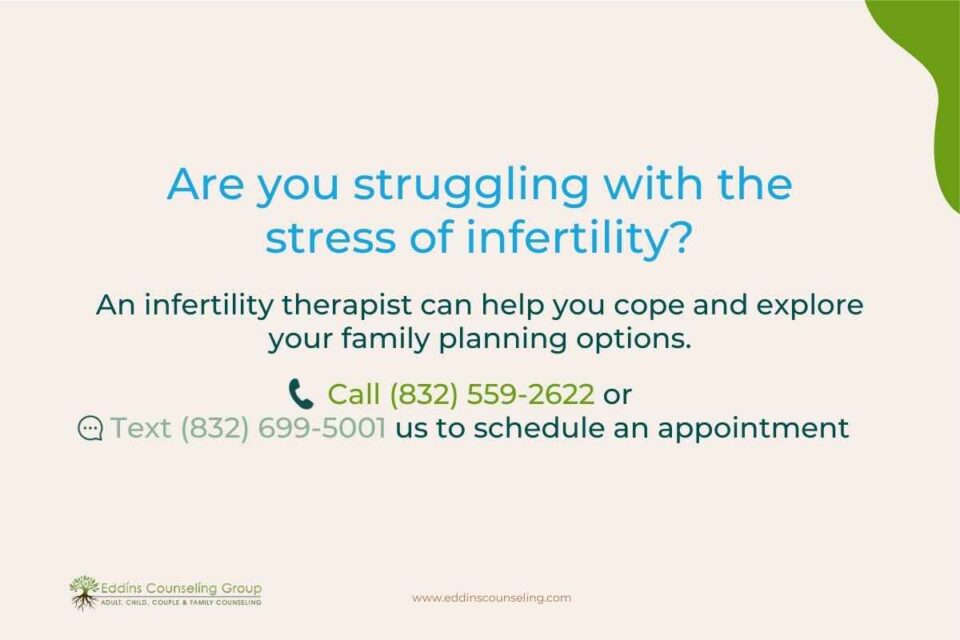
Closing Thoughts
- When facing a big choice like this, you’ll need to carefully consider what your family is willing to sacrifice in terms of time, money, physical strength, and emotional fortitude to achieve parenthood.
- Use your head, as well as your heart!
So, these are my closing thoughts.
I truly believe in educating yourselves about whatever path you choose to parenthood and the entire process.
Think about it. You’re making a lifetime commitment to a child. No decision other than choosing your spouse is important as this one.
You need to make an informed decision, which involves a lot of thought and careful planning. These options cost not only money, but time, physical strength, and emotional fortitude.
Use your head as well as your heart. You’ll want to carefully weigh each option against the other, taking into consideration the success rates and what your family is willing to sacrifice.
It’s a lot of work, but I can assure you that in the end, holding a baby in your arms and being there every day to watch that little life grow into an amazing human being makes it all worthwhile.
If you are struggling with the stress of infertility, the Houston, Montrose, and Sugar Land infertility therapists at Eddins Counseling Group can help you navigate this emotional and stressful journey.
Call (832) 559-2622 or text (832) 699-5001 to get started today.
Thank you for letting me share with you all the different paths to becoming a parent. Here’s my contact information if you want to contact me in the future.
Christi Megow, Adoption Consultant
www.adoptionlady.com
Email: [email protected]
Phone: 713-724-2926

